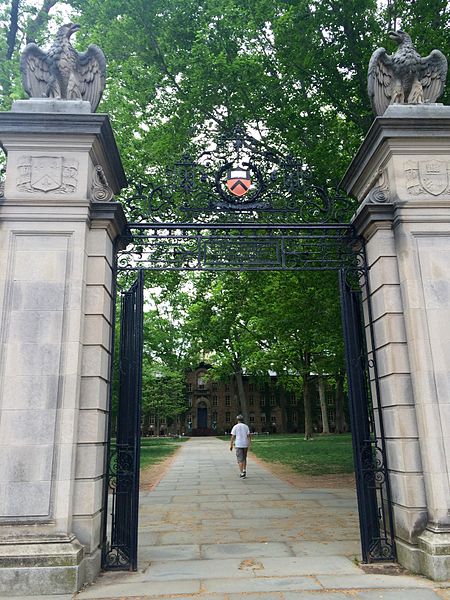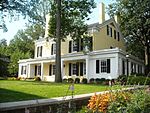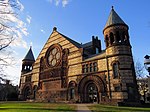FitzRandolph Gate

FitzRandolph Gate is a wrought-iron structure that serves as the official entrance of Princeton University, standing in front of Nassau Hall on Nassau Street in Princeton, New Jersey. The gate was funded by a bequest of Augustus Van Wickle in honor of his great-grandfather, Nathaniel FitzRandolph, who had donated to the university the land on which Nassau Hall sits. The gate was completed in 1905 and was designed by McKim, Mead & White. The gate remained closed and locked apart from graduation and the P-rade until 1970, when that graduating class ensured that it would always remain open, "in a symbol of the University's openness to the local and worldwide community."At commencement each year the graduating seniors process out of the gates to mark the completion of their time at Princeton. A widespread legend exists on campus that students who walk out of the gates before graduation will not finish their degree. In 2004 a tradition was added at Princeton's opening exercises called the Pre-Rade where the matriculating freshmen march into the gates behind the banners of their residential colleges to mark their entrance into Princeton.
Excerpt from the Wikipedia article FitzRandolph Gate (License: CC BY-SA 3.0, Authors, Images).FitzRandolph Gate
Nassau Street,
Geographical coordinates (GPS) Address Website Nearby Places Show on map
Geographical coordinates (GPS)
| Latitude | Longitude |
|---|---|
| N 40.349611111111 ° | E -74.659722222222 ° |
Address
Hamilton Jewelers
Nassau Street 92
08542
New Jersey, United States
Open on Google Maps










